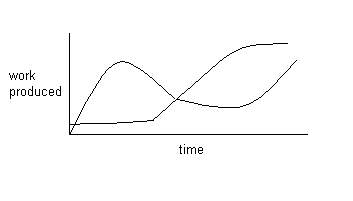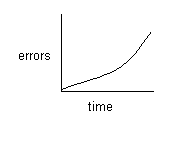
CIS 375 SOFTWARE ENGINEERING
University Of Michigan-Dearborn
Dr. Bruce Maxim, Instructor
Software Quality:
Assess Quality:
Quality:
(Engineering definition)
Quality Assurance:
Consists of :
Auditing and reporting functions of management.
Goal:
To provide data to management to allow informal decision making regarding the artifact (software).
Total Quality Management:
(TQM)
Software Quality Assurance:
Software Quality Assurance Group:
Duties:
Structured Walkthrough:
(Design review)Peer review of some product - found to eliminate 80% of all errors if done properly.
Why Do Peer Review?

Formality Timing:
~ After analysis.
~ After design.
~ After compilation (first).
~ After test run (first).
~ After all test runs.
Roles In Walkthrough:
Guidelines For Walkthrough:
Formal Approaches To SQA:
Software Reliability:
Measures:
= MTTF (mean time to failure) + MTTR (mean time to repair).
Reliability Models:
VS
Reliability Models That Are Derived From Hardware Reliability Assumptions:

Models Derived From Internal Program Characteristics
Seeding Models:
Take errors and arbitrarily place them into the code, to see how long it takes to catch the seeded errors.
Criteria For Evaluating Models:
Maintenance:
(Longest life cycle phase)
Evolving system vs. Declining:
Maintenance Team:
Types Of Maintenance:
Maintenance Difficulty Functions:
Maintenance Cost Factors: